- - If there is a foreign object on the lens or image sensor of the camera, image defects are shown on the screen in the form of black spots or bruises as above.
- - Depending on the size of the foreign body, it may appear as a thicker and larger foreign body or as a cloudy and small foreign material.
- - Even a foreign object of the same size may look different as a small, dark foreign material or a large, widely spread foreign material depending on where it is located.
- - The closer it is to the image sensor, the smaller and darker it is, and the closer it is to the lens, the thinner and wider the stain appears.
Basic Theory
홈 > 제품소개 > Automotive Solution
Defect
In the camera manufacturing environment, there may be contamination and defects in the camera due to various causes. It is important to eliminate the cause of the problem, but it is even more important to detect the source of contamination generated in the production process.
Flare
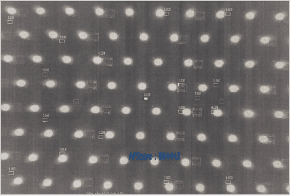 GOOD
GOOD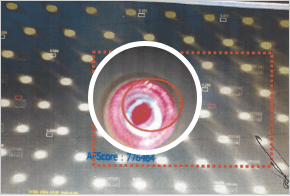 Cause: scratch while molding the lens
Cause: scratch while molding the lens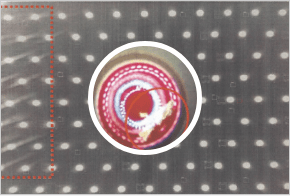 Cause: foreign material on the lens
Cause: foreign material on the lens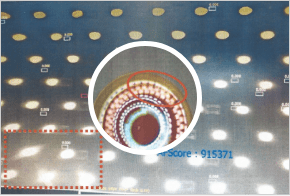 Cause: stained lens
Cause: stained lens
- Camera flare is caused by various lens defects.
Method of Flare inspection
| Item | Spot Light Source Inspection | LED Light Source Inspection |
|---|---|---|
| Image | 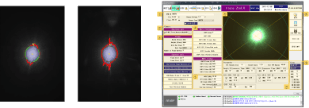 |
 |
| Characteristics |
- Application of ND Optical Filter or Camera Gain value - Applied ND Filter : ND4(transmittance 25%), ND5, ND6(trasmittance 16.7%) - Inspection on Center, Side 4 Points - Two types of ND Filter applied on each inspection point. |
- Optical Filter Not used. - Simultaneous inspection over a whole image - Defect extracted when a light source in an image is larger than the predetermined width x height [pixel]. |
| Steps(Process) |
1. Turn on the light source at the location to be inspected (Center, 0.5 Field or more, 4 Points) and wait until it becomes stable. 2. Take a light source image with the camera. 3. Convert the size of the light source image into an angle to determine whether it is good or bad. 4. Change the ND filter. 5. Perform the steps 2. to 3. 6. Change the position of the light source to the next position. 7. Repeat from steps 2. to 6. as many as the number of light sources. |
1. Turn on all light sources (LEDs) within the angle of view. 2. Take a light source image with the camera. 3. Extract the binarized image based on the predetermined brightness threshold. 4. Measure the size of the image of each light source in pixels, and then determine whether it is good or bad. |
| Specification |
- Center quality standard (evaluated by converting the light source image size into an angle) - When applying ND4 or Camera Gain value: 3 degrees or within the specified value - When applying ND5 or Camera Gain value: 6 degrees or within the specified value - All of the above (examples) are defective, and when the light spreads beyond the green baseline (6 degrees), it is marked as red, meaning defective. |
- Reference brightness for binarizing the original image: 235 (Range: 0~255) - Horizontal size for light source quality standard: 35 [Pixel] - Vertical size for Light source quality standard: 35 [Pixel] - The above range of good products is set differently for each model based on the master camera, and it is an experimentally obtained value by comparing to the defective master camera. |
- There are two main types of flare inspection: Spot Light Source inspection, which is frequently used for vehicle cameras, and LED Light Source inspection, which is widely used in mobile cameras.
Inspection Method - Impact Analysis of particie(blemish)

Ways to Inspect Flare – Analysis on Foreign Objects
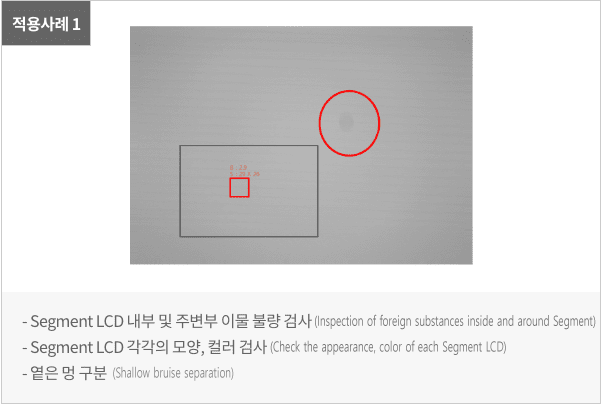
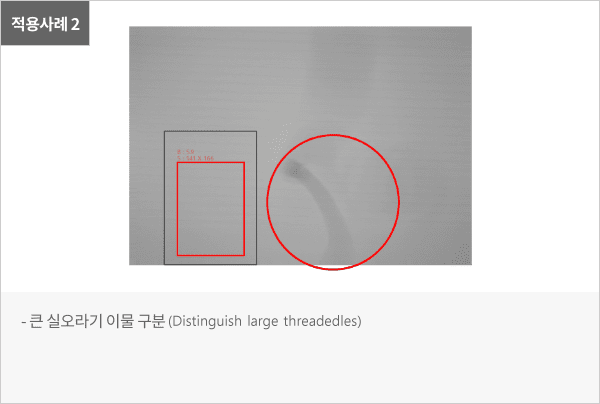
- In this way, when an image defect occurs due to a foreign material, a bad camera is detected using the difference in brightness of the center compared to the periphery as above.
Related Product
- Business
 sales@luritech.com
sales@luritech.com  031-689-3696
031-689-3696

 English
English 한국어
한국어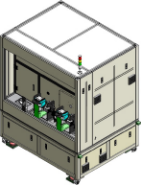 Image Test
Image Test